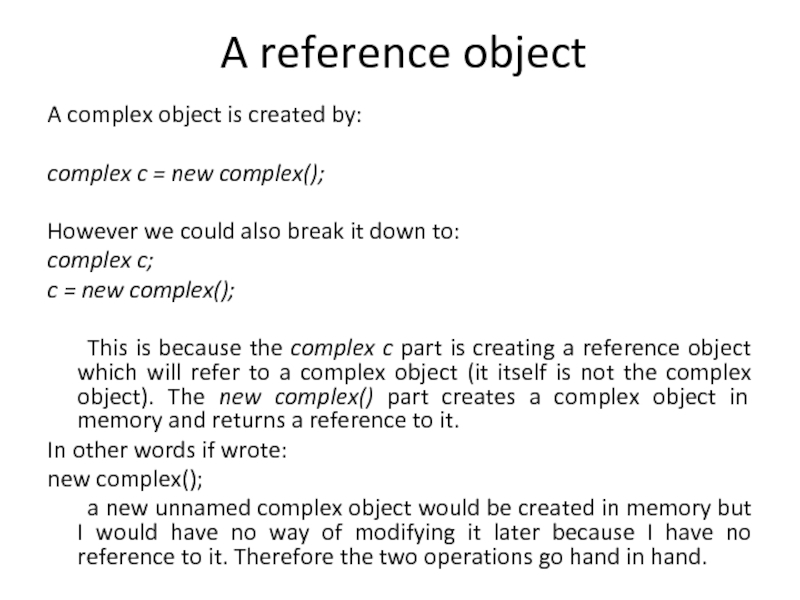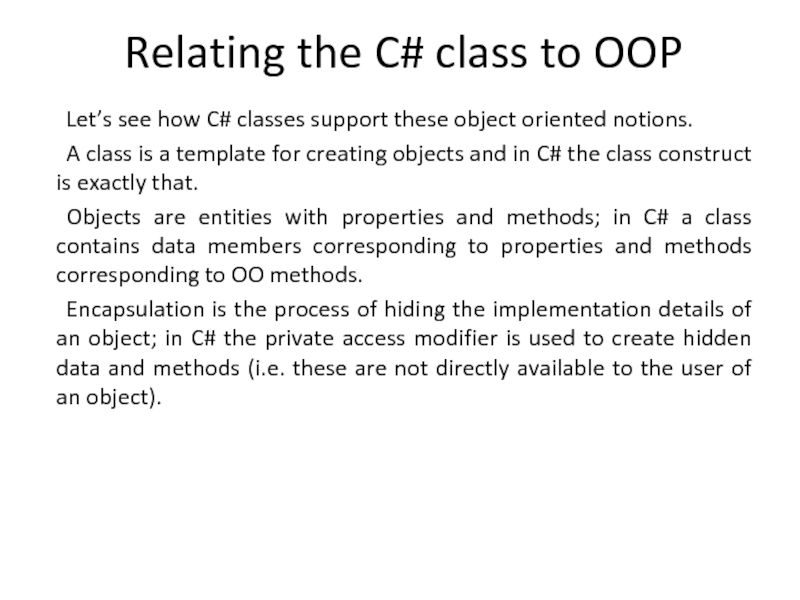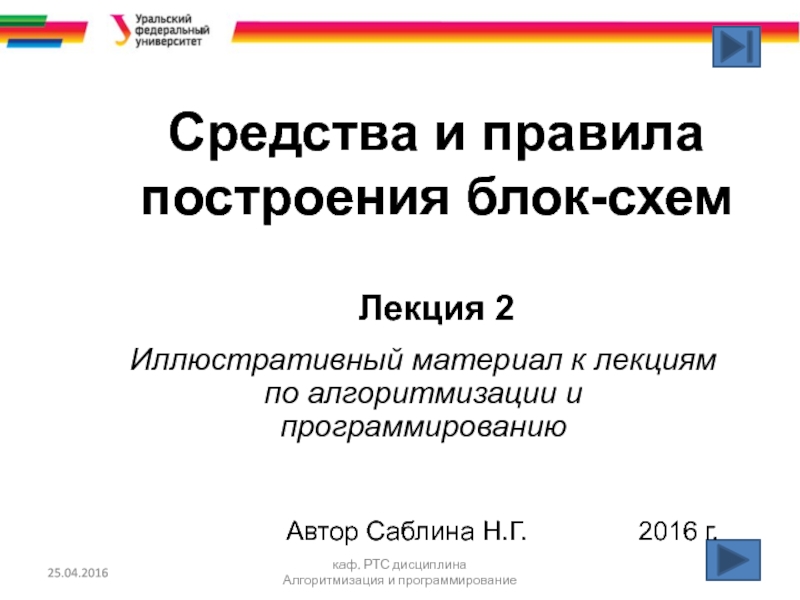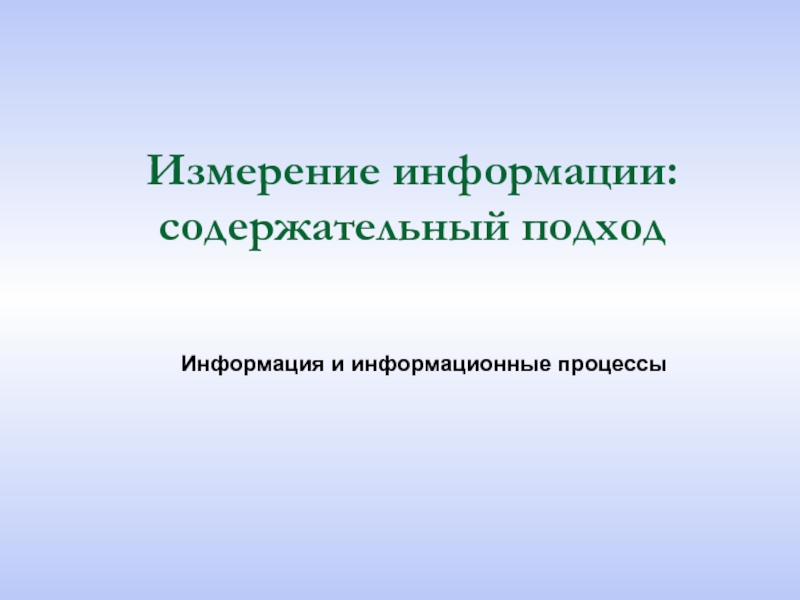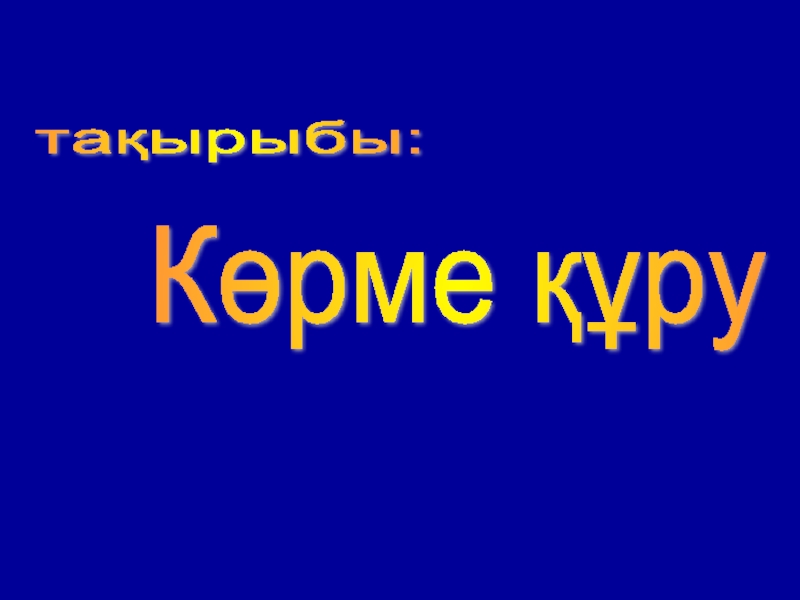- Главная
- Разное
- Дизайн
- Бизнес и предпринимательство
- Аналитика
- Образование
- Развлечения
- Красота и здоровье
- Финансы
- Государство
- Путешествия
- Спорт
- Недвижимость
- Армия
- Графика
- Культурология
- Еда и кулинария
- Лингвистика
- Английский язык
- Астрономия
- Алгебра
- Биология
- География
- Детские презентации
- Информатика
- История
- Литература
- Маркетинг
- Математика
- Медицина
- Менеджмент
- Музыка
- МХК
- Немецкий язык
- ОБЖ
- Обществознание
- Окружающий мир
- Педагогика
- Русский язык
- Технология
- Физика
- Философия
- Химия
- Шаблоны, картинки для презентаций
- Экология
- Экономика
- Юриспруденция
Introducing the C# Class Types. Defining classes, objects and methods презентация
Содержание
- 1. Introducing the C# Class Types. Defining classes, objects and methods
- 2. Content Introduction Defining the classes Access modifiers
- 3. Introduction The class construct is
- 4. Defining the classes C# classes enable
- 5. Access Modifiers In general terms a class
- 6. Defining Data Data is declared inside the
- 7. Defining Methods Methods define the behavior of
- 8. Defining Methods If no data is to
- 9. Putting it All Together The following example
- 10. public class Area{ //data section private double
- 11. namespace ConsoleApplication3 { class Program
- 12. A reference object A complex object is
- 13. Relating the C# class to OOP Let’s
Слайд 1Object-oriented Programming
Lecture 4
Introducing the C# Class Types.
Defining classes, objects and
Слайд 2Content
Introduction
Defining the classes
Access modifiers
Defining Data and Methods
Relating the C# class to
Слайд 3Introduction
The class construct is used to support encapsulation, data
Notice that in each case we really didn’t need to know the internal implementation of the object to successfully use it. By creating classes we can define our own objects by giving them properties and methods.
Up until now, we have been using intrinsic data types to manipulate numeric data. With classes we can create new data types to suit our own particular problem. A class is like a template or definition which is used to create an object. An object is then an instance of the class. A class specifies the data and methods relevant to the object.
Слайд 4Defining the classes
C# classes enable programmers to model real-world objects as
A class creates a new data type in C#.
The keyword class is used in C# to declare a class.
syntax:
[access-modifier] class identifier [:base-class]
{
class-body
}
Items in square brackets are optional.
Access modifiers are discussed later and typically the public keyword is used with classes.
Identifier gives the class a name.
The optional base class is for advanced classes dealt with later on.
Finally the class body is where the data and methods are placed.
Слайд 5Access Modifiers
In general terms a class consists of a hidden part
Access modifiers are placed before data and methods in the class body. The two most commonly used are public and private. Public means that users of the object either have direct access to data or can invoke a method.
Private means that object users cannot directly access data or invoke the method, essentially hiding them.
Слайд 6Defining Data
Data is declared inside the class body in almost exactly
syntax:
[access-modifier] data-type identifier [= intial-value];
For example
private int x = 10;
public double radius = 10.5;
The variable x is hidden, whereas the variable radius is usable.
Слайд 7Defining Methods
Methods define the behavior of an object and are where
syntax:
[access-modifier] return-data-type identifier ([data-type param1], [data-type
param2],...)
{
method-body
};
Слайд 8Defining Methods
If no data is to be returned from a method
Examples:
Слайд 9Putting it All Together
The following example is a first attempt at
Слайд 10public class Area{
//data section
private double real = 0;
private double imag =
//method section
private void zero()
{
real = 0.0;
imag = 0.0;
}
public void set_real(double r)
{
real = r;
}
public void set_imag(double i)
{
imag = i;
}
public double magnitude()
{
return Math.Sqrt(real * real + imag * imag);
}
}
namespace MyComplex
{
class TestClass
{
static void Main(string[] args)
{
double r;
complex c = new complex();
c.set_imag(2);
c.set_real(-2);
r = c.magnitude();
Console.WriteLine("the magnitude is : {0}", r);
Console.ReadLine();
}
}
class complex
{…}
}
Слайд 11namespace ConsoleApplication3
{
class Program
{
static
{
Area a = new Area();
double areaRect = a.rectangle(4, 3);
double areaCirc = a.circle(7);
Console.WriteLine("rectangle S={0}, circle S={1}", areaRect,areaCirc);
Console.ReadKey();
}
public int getSomeNumber()
{
Random r = new Random();
return r.Next();
}
}
class Area
{
//data section
private double length, width;
private double p = 3.14;
//method section
private void zero()
{
length =width = 0;
}
public double rectangle(double x, double y)
{
line1 = x;
line2 = y;
return x * y;
}
public double circle(double R)
{
return p * (R * R);
}
}
}
Слайд 12A reference object
A complex object is created by:
complex c = new
However we could also break it down to:
complex c;
c = new complex();
This is because the complex c part is creating a reference object which will refer to a complex object (it itself is not the complex object). The new complex() part creates a complex object in memory and returns a reference to it.
In other words if wrote:
new complex();
a new unnamed complex object would be created in memory but I would have no way of modifying it later because I have no reference to it. Therefore the two operations go hand in hand.
Слайд 13Relating the C# class to OOP
Let’s see how C# classes support
A class is a template for creating objects and in C# the class construct is exactly that.
Objects are entities with properties and methods; in C# a class contains data members corresponding to properties and methods corresponding to OO methods.
Encapsulation is the process of hiding the implementation details of an object; in C# the private access modifier is used to create hidden data and methods (i.e. these are not directly available to the user of an object).
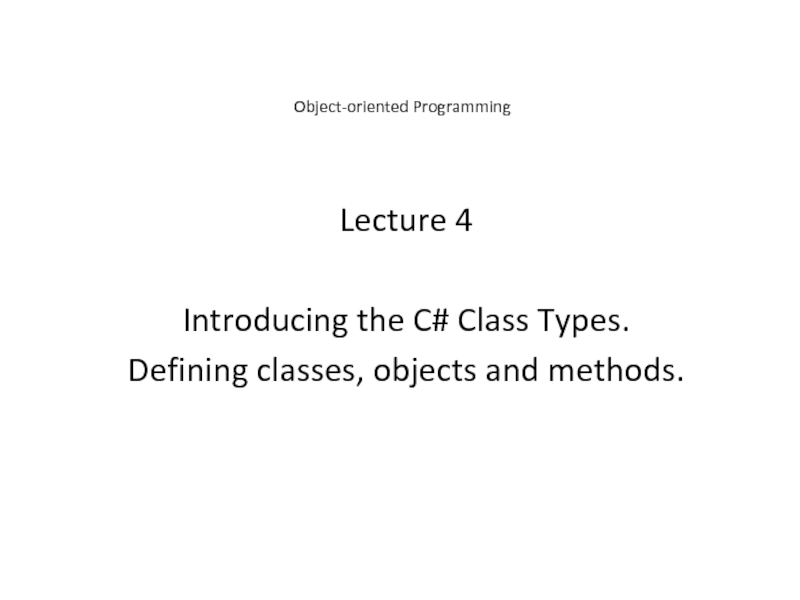
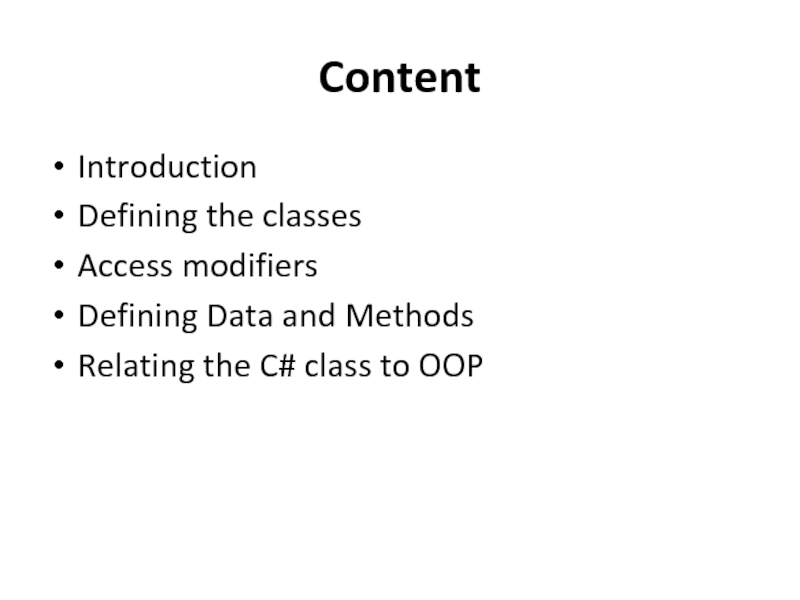
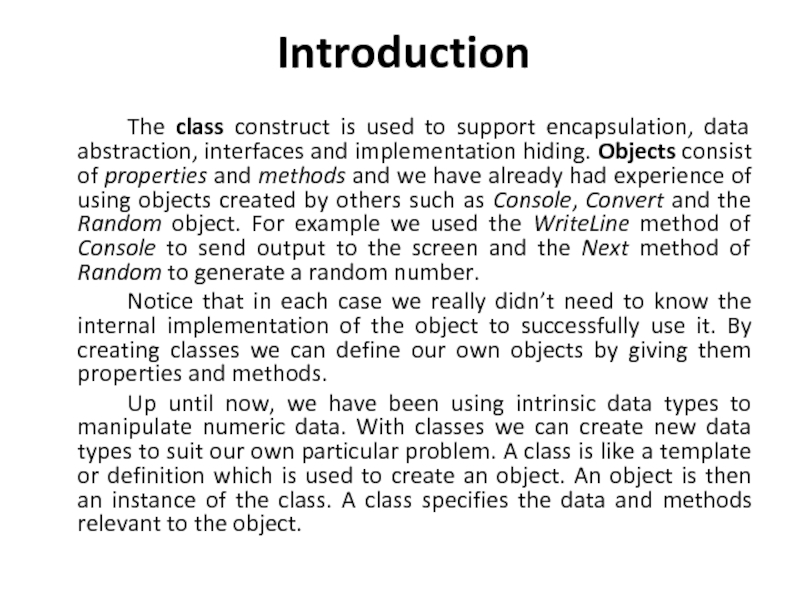
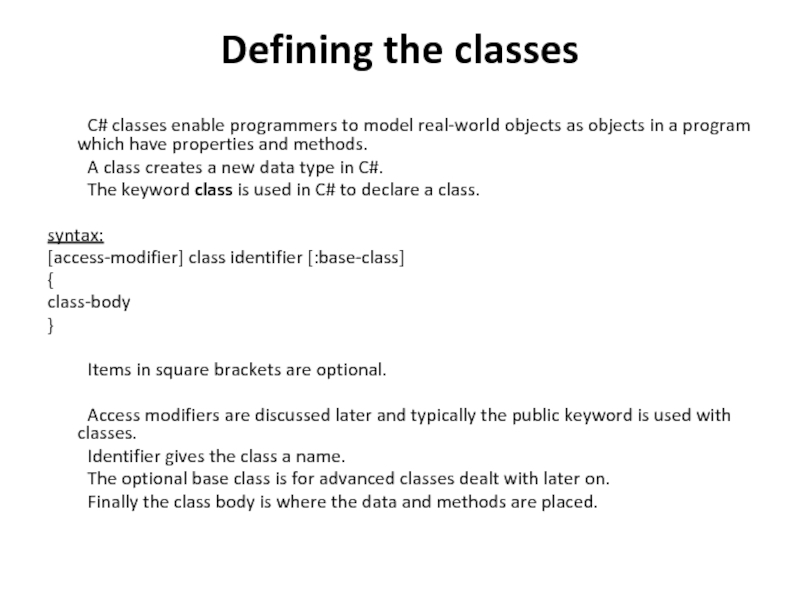
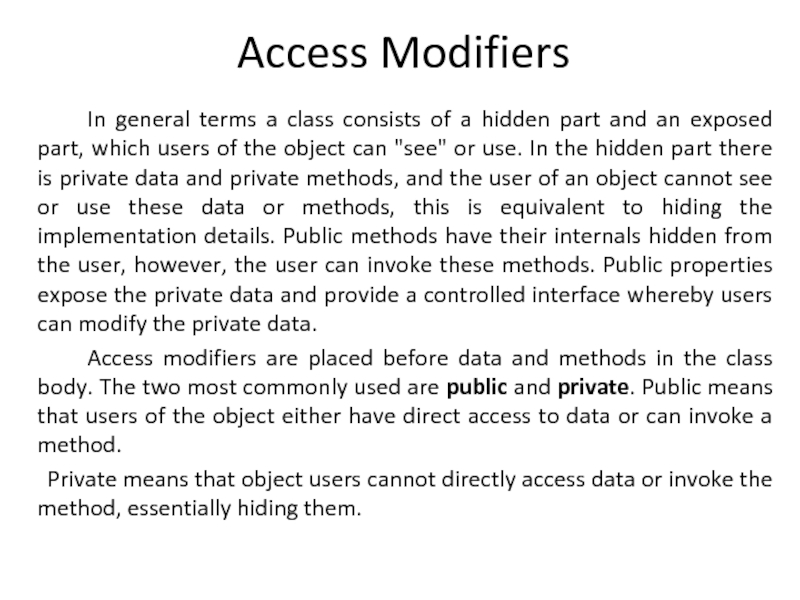
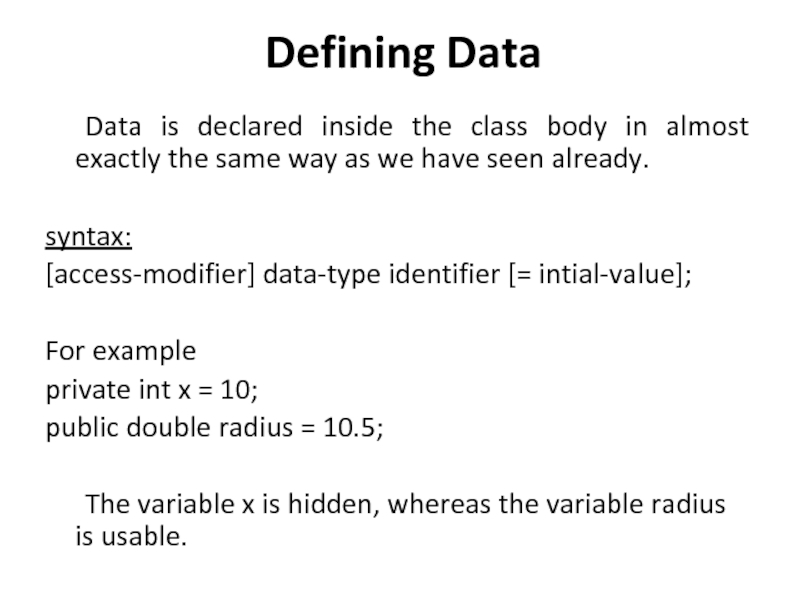
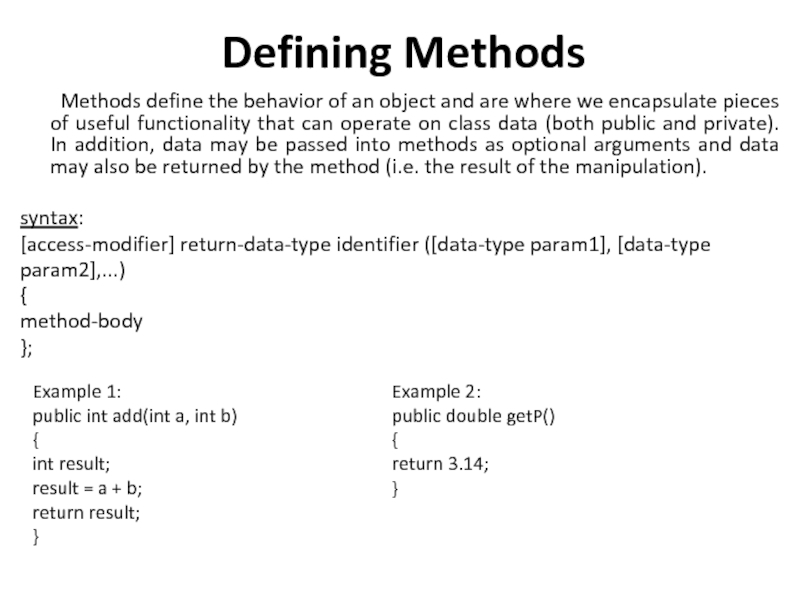
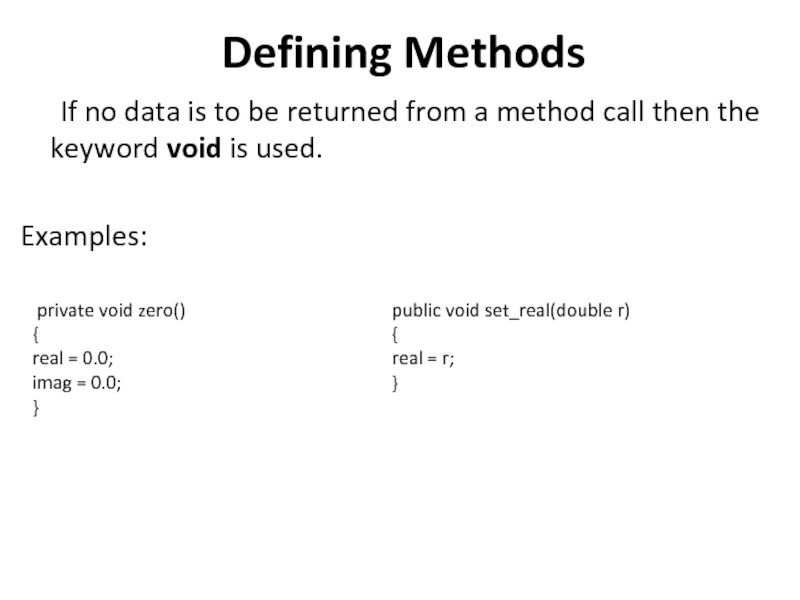
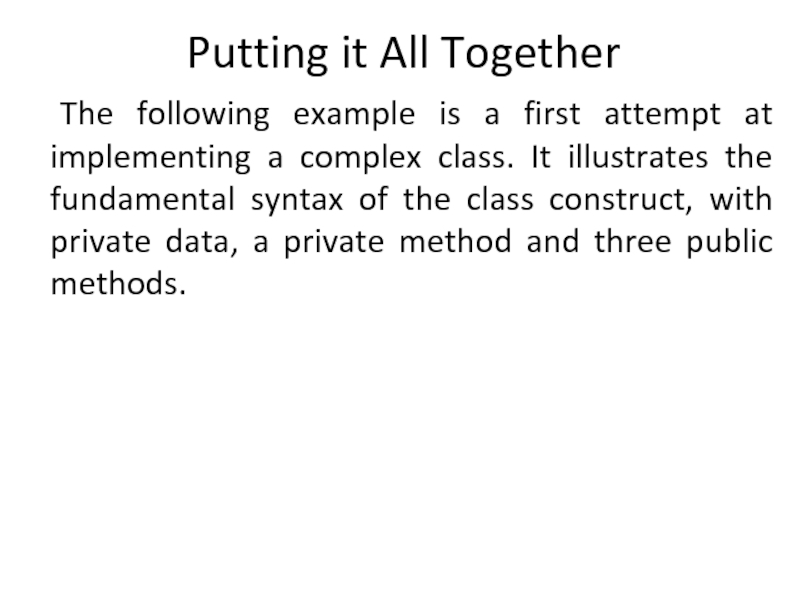
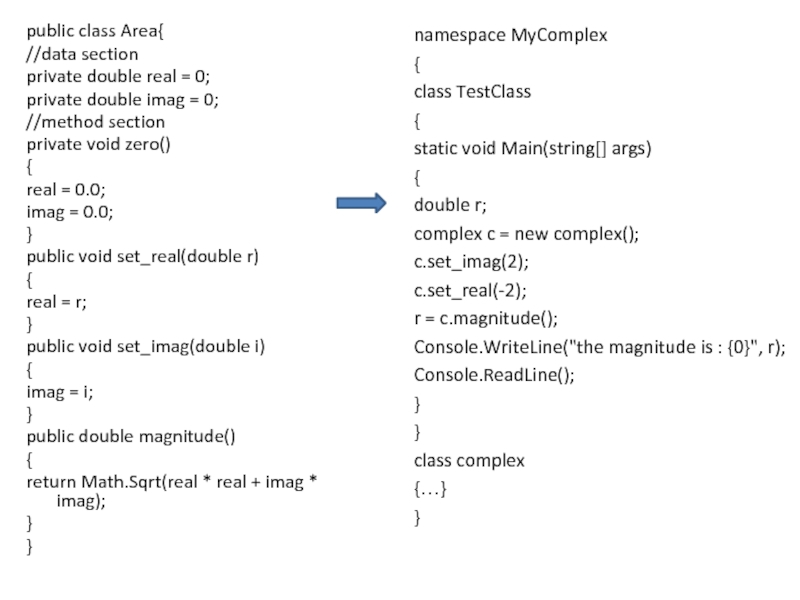
![namespace ConsoleApplication3{ class Program { static void Main(string[] args) {](/img/tmb/5/475876/ddbc7aa28a84b4e2895d2bf52a6f78d7-800x.jpg)
